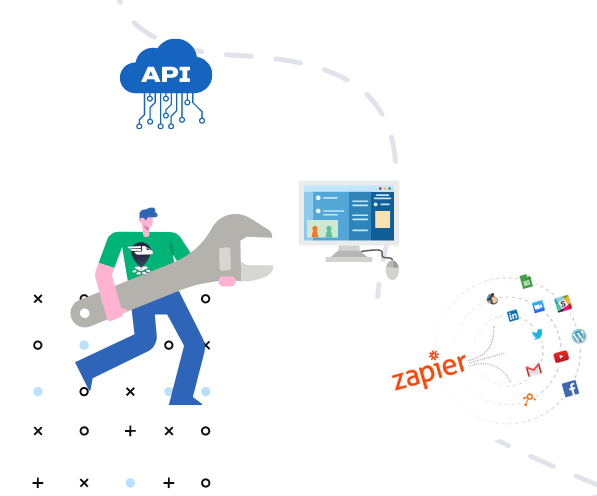by FreightPrint
.png)
Supply chain disruptions have become a common occurrence in recent years, with events like the pandemic, bottlenecks in the Suez Canal, and a shortage of qualified workers affecting the supply chain from start to finish.
Warehouses play a crucial role in the supply chain and, as such, improving their return on investment (ROI) is of utmost importance.
After all, the global warehousing and distribution logistics market is expected to grow at a CAGR of 6.2% between 2023 and 2027, by $72.96 billion, so there’s no better time to have your piece of the pie.
Contents:
Businesses must be prepared to adapt to changes and disruptions in the supply chain, whether they come in the form of innovations or unexpected events. The goal is to position the warehouse in a way that will benefit the business during supply chain shortages.
Global warehousing and distribution logistics market size. Source: Technavio
Maximizing the return on investment (ROI) in your warehouse operations is critical to the success and profitability of your business. You can improve your ROI by reducing costs, improving efficiency, and increasing sales with the right strategies and techniques. Here are some tips on how to ameliorate your warehousing ROI and grow your logistics business.
Shipping goods to clients does not cut down on the length of time items stay in your warehouse. Numerous companies still have a large amount of stock.
Over the past five years, the average inventory held based on sales per day has risen by more than 8%. Hence, you should examine and streamline your inventory as having surplus stock in your warehouse incurs expenses. You can carry out an inspection to pinpoint inactive inventory.
Also, make the most of your warehouse space by implementing efficient storage systems and reducing clutter. This includes utilizing vertical space, implementing mobile shelving, and utilizing pallet racking.
Streamline processes, such as picking and packing, to minimize errors and increase efficiency. Consider investing in technology like barcode scanning (or have it implemented in your warehouse management system), and automated material handling systems to make operations smoother.
The key to keeping costs down and realizing a faster return on investment is to move products from Point A to Point B as efficiently as possible.
To do this, warehouses should consider an out-of-the-box warehouse management system (WMS) that aligns with their business needs and workflows, rather than an expensive and time-consuming customization process.
Don't let operations stagnate after investing in a WMS. The system should be positioned to grow with the business, supporting changes in customer dynamics and new invoicing services. Consider factors such as inventory visibility and labor management while making the investment.
Implement inventory management techniques to reduce overstocking and stockouts. This includes forecasting, cycle counting, and real-time inventory tracking.
Automate repetitive tasks, such as receiving and shipping, to reduce errors and save time. It can improve accuracy and efficiency, and free up personnel for more valuable tasks.
Moreover, try to integrate a TMS into your business operations or shift to cloud-based WMS since it has been a game-changer in the supply chain. With reduced up-front costs, scalability, and flexibility, warehouses can focus on providing logistics services without worrying about maintaining on-premise data centers and servers.
Partner with suppliers who offer reliable delivery times and flexible scheduling. This can help reduce inventory carrying costs, minimize stockouts, and improve customer satisfaction.
Implementing these five strategies can help you optimize your warehouse operations and improve your return on investment. By utilizing space effectively, streamlining processes, improving inventory management, automating tasks, and partnering with the right suppliers, you can reduce costs, increase efficiency, and improve customer satisfaction.
Schedule a demo
Are you managing your logistics operations manually or using outdated and confusing software?
FreightPrint can help!
FreightPrint™ is an AI-powered logistics software built to boost your transportation and delivery operations

We know logistics is complicated and time-consuming.
Imagine delivering orders to your customers with consistency, accuracy and simplicity.
If you're looking to streamline your shipping and logistics operations, FreightPrint™ could help you a lot!
Read below to learn more about key features and benefits of FreightPrint™.

Imagine processing customer orders, automatically creating optimized routes, communicating with drivers and customers, all without spending any extra time.
▸ Dispatch Loads
Dispatch loads on the go or schedule to dispatch for a future date. Work with carriers, brokers, dispatchers and shippers all from one platform.
▸ Automated Routes
Pick multiple shipments and create routes instantly. Assign drop numbers, edit or remove stops without contacting the drivers.
▸ Driver Assignment
Assign a task or a route to a driver. Don't know who can do the delivery? Allow drivers to pick their loads, or broadcast loads to your carriers and have them bid on your loads.

Free up your phone lines and staff, while meeting and exceeding your customers’ expectations. Spend your precious time closing more deals and going on vacation.
▸ Provide Shipment Tracking
While the FreightPrint™ app provides status updates and other useful information, it can also provide you with shipment tracking.
▸ Collect Signatures, Pictures and Notes
Create an audit trail of shipment statuses with timestamps and location stamps.Receive proof of delivery signature and pictures instantly.

Create and design your own shipping documents. Create templates for your customers to match their specifications.
▸ Print Labels
Create, desigsn and print QR code labels. Add QR codes to your shipping documents and emails. Update shipments by simply scanning labels using your phone.
▸ Design and Customize Documents
Create and design your own shipping documents. Whether it's BOL, POD, rate confirmation or any other customized documents, our document creation tool can help you.

No software is built to perfectly fit everyone's needs, and that’s why we allow you to customize it. FreightPrint is flexible to serve your business needs.
▸ Use API and Automation
Create custom fields and custom checklists to ensure your team can track progress. Connect with SalesForce and OrderTime natively, integrate with your own in-house software using our API, or build automation with Zapier.

Download the free FreightPrint mobile app and start using it for free for 2 weeks. There is no need to enter your credit card details.
Request a Free Demo
We're here to assist you with your transportation software needs. Whether you are a small shipper or big transportation company, we'd be happy to give you a free demo of FreightPrint and answer your questions.
Are you in the materials delivery business? Does keeping track on deliveries while using a fleet of contractors drive you nuts?
Read MoreWant to see if FreightPrint is a good fit for your needs? Whether you are curious about how the software works, or have specific questions about a feature, our product demo is a great way to get started.
Read More